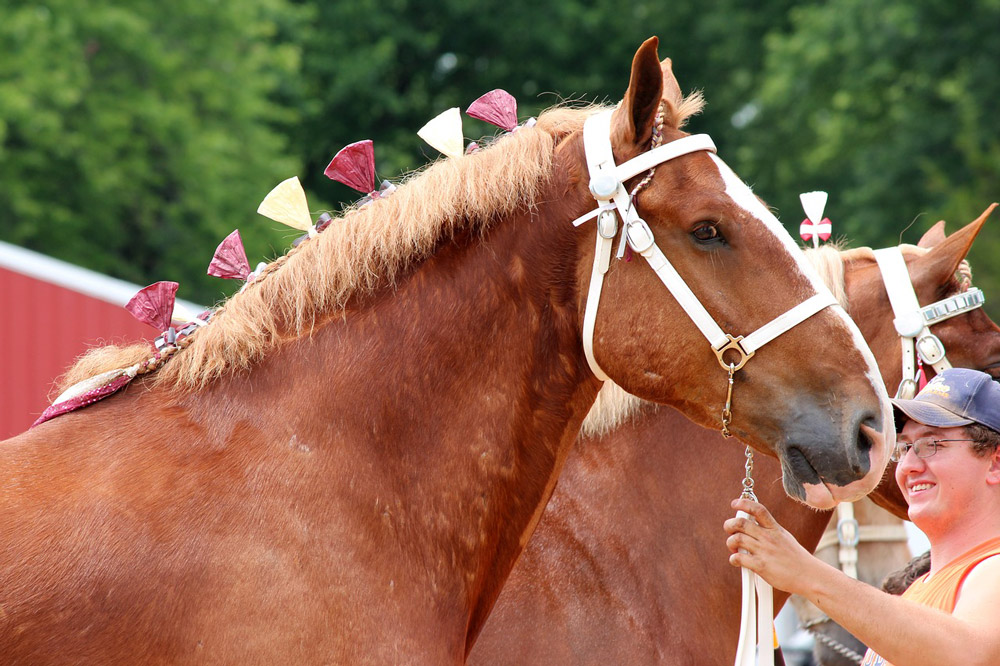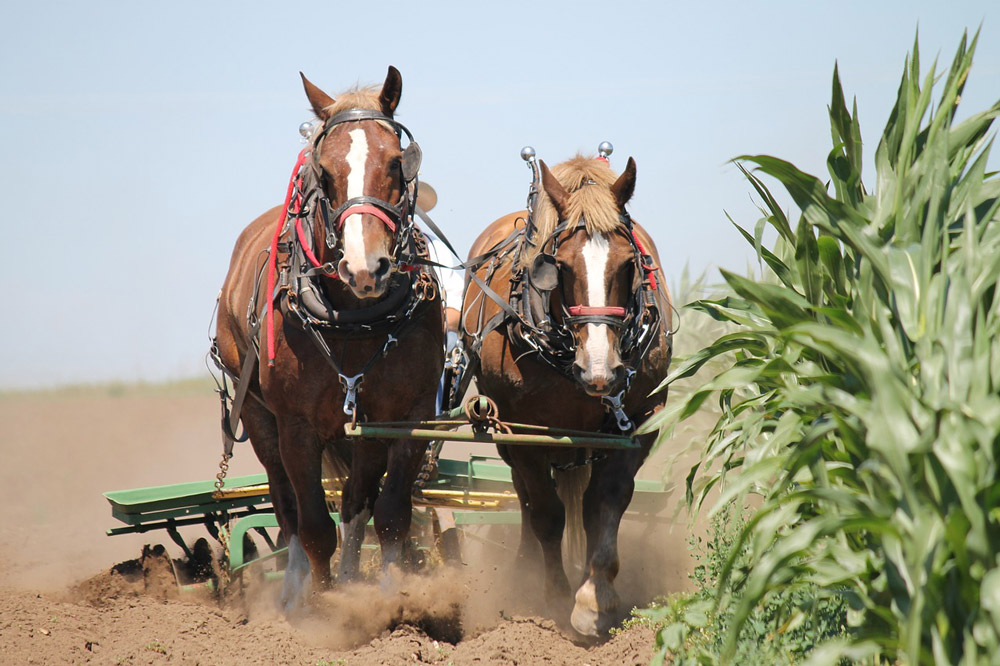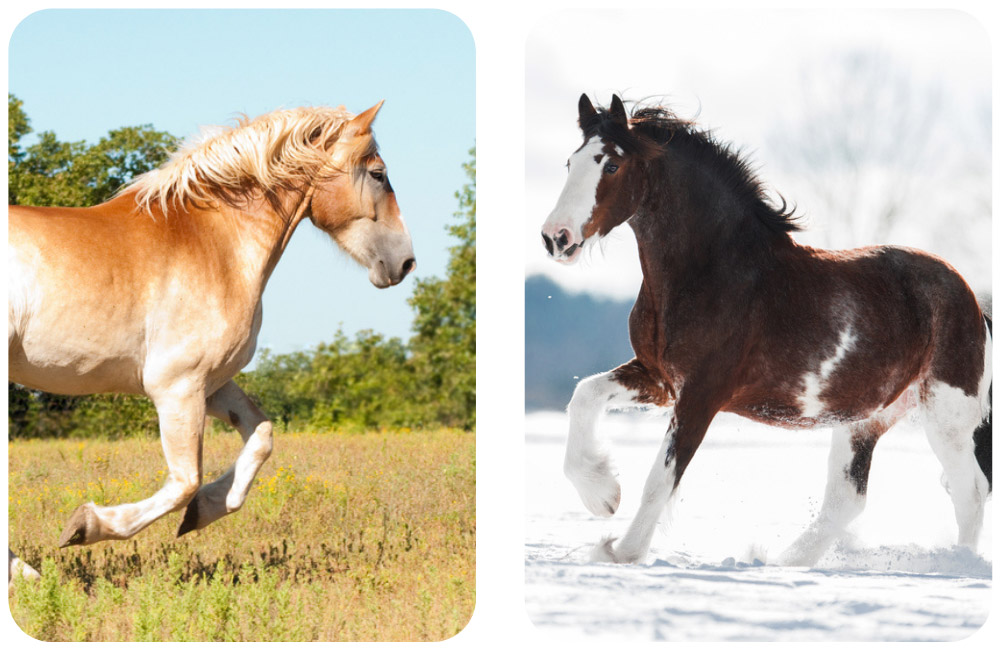
For centuries, the Belgian Horse has been increasingly popular for its unmatched strength. Bred in Belgium to pull carts and plows on farms, these gentle giants have always amazed horse lovers with their exceptional endurance and colossal size. Despite their considerable size, these heavy horses are known to be very gentle. Of course, such desirable traits don’t come cheap – prices of the average Belgian horse starts from $5,000!
Let’s check interesting facts about the Belgian heavy draft breed, temperament, and characteristics.
Belgian Horse History
The Belgian Draft Horse breed came from Brabant in Belgium. It’s one of the strongest horse breeds. The popularity of the draft horse has spread beyond Europe. That’s a favorite draft horse in the United States.
Belgian Draft Horses may be descendants of destriers called Flanders Horses (war horses) from the Middle Ages. The horse has also influenced the Suffolk Punch, the Shire horse, and other modern draft breeds. There’s no strong record, though. The Belgian Draft Horse came from the Flemish Horse or “Great Horse” which was bred as a battle horse. The Brabant was a foundation stock for Belgians.
Belgians were exported from their country of origin to the rest of Europe. Breeders needed larger draft breeds for farming, pulling carriages, and industrial use. Since then, National horse shows have occurred in Brussels to promote the breed. As a result, the population of Belgian Horses has increased. The Belgian Draft Horse became a national heritage of Belgium.

Belgian Horses were actively used during World War II. The horse was developed to be large and muscular. The equine had to carry soldiers and pull weapons. The American Belgian Draft horse has a bit different conformation. The horse is lighter and taller. The breed was commonly used in farming and pleasure riding.
The number of horses has decreased during wartime. Luckily, American breeders succeeded in keeping the “right” draft horse. Eventually, they developed their own type of Belgians.
The American Association of Importers and Breeders of Belgian Draft Horses was formed in 1887. It aims to keep the records of Belgian Draft Horses. It was renamed the Belgian Draft Horse Corporation of America (CORP) in 1937. The founders are Harmon Wolf, Abraham Straus, Nathan Meyer, with the help of their lawyer James D. Conner, Jr. It aims to keep the records of Belgian Draft Horses. And to keep the draft horse breed pure in America. The Belgian Draft Horse Corporation preserves the history of the breed that traces back to the predecessor called the Farceur Horse.
Since 1903, the Belgian heavy draft breed had gained lots of attention after showcasing the horses at the International Livestock Exposition, when the show was held in Chicago. World War II negatively inclined the breed’s population, but the breed survived and ended up being a popular draft horse.
The modern Belgian breed is versatile. You can find a horse in a range of equestrian disciplines. These include halter, plowing competitions, driving, and more. Besides, Belgian Horses are superb companions for pleasure riding. Some representatives are still used at farms and ranches.

Belgian Draft Horse Temperament
The Belgian Draft Horse has a gentle temperament. It’s a highly sensitive animal which makes it a perfect family pet. The Belgian Horse tends to be willing to work. They are commonly used in farming for pulling, plowing, and logging.
Belgians have a brave nature, they are not easily spooked. Some Belgian Draft Horses can be demanding. This is a cold-blooded breed. The Belgian is easy to handle, which is a plus. Owners love this horse for being kind and docile.

Belgian Horse Characteristics and Breed Profile
The Belgian Draft Horse has a refined small head. The body and legs are short but massive. The back is wide and the loins are powerful. The quarter mass is muscular. Compared to other draft breeds, the Belgian has hooves of medium size. The legs are strong and powerful. There’s little feathering on the lower limbs.
The Belgian Horse lifespan is 25 to 30 years, which is impressive. The same goes for a Morgan Horse.
As for health-related issues of Belgians, the junctional epidermolysis bullosa (JEB) is the one. It’s an inherited genetic disorder that hits newborn foals. The JEB leads to losing large spots of skin in foals. That’s usually ended up with euthanasia. Scientists are trying to search for a cure to eliminate this disorder.
Belgian Horse Colors
Belgians are prized for a chestnut color with a mane and tail of flaxen color. Previously, Belgian Horses were commonly bay. But nowadays, you’re likely to meet roan and sorrel equines in the USA. That’s due to American breeders having spread these coat colors.
The Belgian Draft Horse is loved for its pretty white markings. They commonly occur on the horse’s face (white stripe) and lower legs (white stockings).

Belgian Horse Height
So, how tall is a Belgian Horse? The Belgian Horse height goes from 16.2 to 17 hands tall. A Belgian Horse named Big Jake is the world’s tallest horse in the world. The horse’s height is 20 hands 2.75 inches tall with no shoes included. It weighs 2,600 pounds. The record was set at Smokey Hollow Farm where Big Jake is kept.
Belgian Horse Weight
So, how much does a Belgian Horse weigh? The Belgian Horse weight is 2,000 pounds on average. Brooklyn Supreme was another Belgian Draft horse that set the record in the 1940s. It’s the largest Belgian Horse that weighed 3,200 pounds.

How Much Does a Belgian Horse Cost?
A Belgian Horse costs from $5,000 to $10,000. It’s an average price for a young and healthy equine. The price depends on the Belgian’s color, age, gender, health condition, build, and training experience.
Belgians are a great option for beginners. They are calm and docile. The Belgian Draft Horse is an easy keeper, which is a great perk. The horse keeps weight well, and it doesn’t need an excessive amount of feed.
If you’re looking for a riding horse, you should consider riding equipment as well. It includes a horse riding helmet, breeches, and riding boots. The riding gear makes it comfy and safe.

Belgian Horse vs Clydesdale Horse
Belgian Draft Horse vs Clydesdale Horse – who wins? The Belgian Draft Horse is larger than the Clydesdale Horse. The Belgian Horse height is 16,2 to 17 hands tall. The Clydesdale horse height is 17 to 18 hands tall. Clydesdales tend to be taller, but they weigh less. The average weight of both breeds is 2,000 pounds.
Belgian and Clydesdale horses are two of the largest horse breeds. You can check the Clydesdale breed’s profile here.

Belgian Horse vs Percheron Horse
When it comes to conformation, both Belgian and Percheron are draft horse breeds. While their limbs boast strength and vigor, slight differences between them can be seen. The Belgian horse is typically shorter with a bulkier head. Whereas the Percheron stands taller with an elongated body type accompanied by a refined face.
The Belgian and Percheron breeds are renowned for their tranquil, amiable dispositions. They are both brilliant workhorses as well as ideal companions. The Belgian horse is usually viewed to be more tractable and easier to train. The Percheron horse tends toward being headstrong and autonomous.
For practical uses, the Belgian horse and Percheron are both fit for agriculture, forestry work, and heavy hauling. Belgians typically take to urban areas better as transportation animals, such as pulling carriages or carts. While Percherons tend to be used more often in tasks out of town like farming or logging.

Belgian Draft Horses Explored
The Belgian Draft Horse is a tremendous draft horse. It can be used in draft work and industrial work. Both riding and driving disciplines suit this massive horse. Belgian Horses are loved for their calm and outgoing temperament. These are brilliant companions for beginners.
A Belgian Draft Horse will cost you around $5,000 to $10,000. Besides, you’ll need shelter, feed, and a water supply to keep it healthy.
